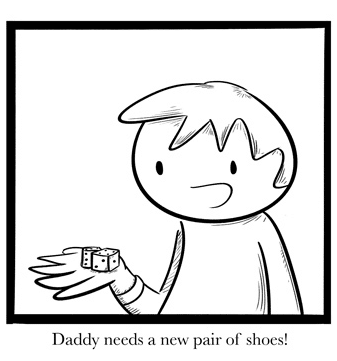Last Updated on July 2, 2020
You led with a pitch to the influencer, and because you understood the appropriate value assignment and picked the right product influencers it was a solid pitch. However, you find yourself now with a reply from an influencer asking for more. What to do, what to do? If you’re lost already, this is article 11 of a 14 part series on influencer marketing. I do recommend starting there to get the full benefit of this piece, or at minimum the other two articles referenced on selecting the best influencers and pitching them.
Is it Worth it?
The first question as you see the reply in front of you is whether or not negotiation is worth your time. Should you simply move on to different influencers or continue the conversation?
- If you applied the rough mathematics associated with picking the right product influencers, then your target is of the best possible fit for you. In such a case, I would advise at lease continuing with the process.
- If you applied more of a scattershot approach and have contacted a large number of influencers on your campaign, then you may be alright politely declining to pay more / give more. Just don’t ignore the message; that isn’t professional.
Pick a Negotiating Strategy
The next consideration is how you anticipate using influencers and influencer networks like Intellifluence in the future. There are two primary schools of thought: relational negotiating and transactional negotiating. Let’s explore the differences.
Relational — long term focused, viewing the current transaction as one of a series of many future transactions. The focus is less on haggling and more on choice selection, where trust is more important than time expended in making that choice. If the transaction is successful, a repeat transaction is likely, and is important in businesses where word-of-mouth is crucial.
Transactional — short term focused, where the future transactions are less of a consideration. The focus on today’s deal and haggling for the best one. Trust and loyalty aren’t nearly as strong of factors; this style of negotiating is more about winning. If the other party perceives a win, then it is a strong word-of-mouth marketing takes places to other similar negotiators.
Which is right for influencer marketing though? On one hand, if you have a successful campaign, you’ll want to be able to use the same influencer again for follow-ups, future product launches, etc. On the other hand, let’s make a stronger assumption: if you’re reading this, you may have discovered some influencers and pitched, not fully knowing what to expect as a ROI, and thus in order to even consider employing the strategy back, you need a win.

To make this work as well as possible, we’re going to approach this negotiation as a polite transactional, which leaves the door open in the future for a greater relationship to flourish. In order to do this, let’s employ the Harvard Business Review’s 9 steps to getting the deal done.
Step 1: Determine satisfactory outcome for the influencer review
On your end, the satisfactory outcome would be a review on the right social channels that deliver traffic that converts into sales. How many sales? For your reviewer? An appropriate compensation for the time expended. At this stage, you don’t yet know what the appropriate compensation is — hence the negotiation.
Step 2: Identify the opportunities to create value
This is the common ground phase; you more or less have already covered that. Both parties believe the product is worth reviewing and the influencer is worth receiving some form of compensation for his or her time.
Step 3: Identify your BATNA and reservation price
A BATNA is the Best Alternative To Negotiated Agreement. Given the type of transaction we’re discussing, your BATNA could be to give the same amount of product and compensation to the next influencer on your list; or it could be to spend the money on PPC, or any number of activities. Knowing the highest price you’ll pay and your alternative if a deal can’t be reached that fits within those parameters is key, but so is trying to determine the other party’s BATNA. If the influencer declines the review at your current offer levels, is there another review waiting to be handled? Is the influencer highly sought after and thus is always busy? Or, is the alternative more free time? These are important considerations.
Step 4: Improve your BATNA
It goes without saying that the better your alternative is, the stricter you can be in your current negotiations. As an example, continue researching other influencers that might actually be a better fit and at better pricing, and continue testing other forms of traffic (always test, forever test).
Step 5: Get the decision maker
For all intents and purposes, the influencer responding to your pitch is the decision maker. However, that isn’t always the case. It is possible that the pitch/negotiation is being handled by an assistant — a caveat before you attempt to circumvent, the process may exist for a reason and attempts to bypass might result in burning a bridge. If you feel very strongly about the deal offered, believe it is also perfect for the influencer, and have determined that you aren’t getting anywhere with the support staff, then you may have nothing to lose by approaching directly via the social channels to indicate how excited you are to be working with said influencer in the future, if terms can be met.

Step 6: Study like the test is tomorrow
The more you know about your counterparty the better. Granted, you may not have time to invest in this, but assuming this were an aspirational influencer pitch it would be vital to understand the influencer’s personality, negotiating style, cultural background, goals…essentially anything that might impact a decision maker’s thought process. The more you understand, the easier it’ll be to understand your counterparty’s BATNA and help to frame your offer in a way that exceeds that while remaining within your own scope of success.
Step 7: Prepare for process flexibility
Essentially, this is where you are. You pitched and received a counter, perhaps unexpectedly. Negotiations don’t always follow the same volley of counters back and forth; sometimes strange and unpleasant situations arise out of emotional misunderstandings that can derail the overall process. Maybe someone else takes over negotiation for the influencer; maybe the counter keeps increasing instead of narrowing to something you’d be willing to pay. Patience is key; be calm, collected, firm with regards to your reservation price and BATNA, yet creative enough to find a solution that wins for everyone.
Step 8: Establish fairness
If the deal is to work, both parties need to be happy that the deal on the table (er…inbox) is both fair and reasonable. If you were to research current and comparable rates for similar review types and audience sizes, which might go a long ways to helping the influencer understand you aren’t trying to take advantage, but instead are wanting to pay a fair price. Your criteria for fairness may not be the same as the influencer though, so be prepared to explain why your formula is the preferred method — conversely, if the influencer is able to counter with even better criteria and data than you currently have, you may feel hard-pressed to reject the proposal and thus feel more satisfied with the proposed deal.
Step 9: Alter the process
The inverse of step 7, if you feel that your ideas and criteria are being ignored, you can always alter the process in your favor by bringing in one of your own support staff to complete the transaction with limited knowledge only on price you’re willing to pay and number/type of reviews you’re willing to accept. Sometimes, changing who sits at the table can more readily result in a deal.
Negotiate with an Eye to the Future
Just remember throughout the process to remain positive and focused on the goal of working with the influencer, including possibly again in the future. As such, be helpful in providing information, explaining your position, and if you are stuck, consider sharing why you are pitching with the product quantity and compensation levels that you are based on the criteria you used to determine what success might look like. If you found this by searching elsewhere on negotiating strategies and are intrigued on negotiating with influencers, you can get started by signing up here.

Joe, CEO and Co-Founder of Intellifluence, has over 25 years of experience in SEO, leading several successful marketing companies and providing expert consultation. He is the author of The Ultimate Guide to Using Influencer Marketing, which is available as an eBook or in print.






